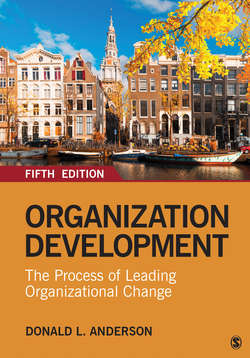Читать книгу Organization Development - Donald L. Anderson - Страница 17
На сайте Литреса книга снята с продажи.
Example 4: A Future Search Conference in a Northern California Community
ОглавлениеSanta Cruz County is located in Northern California, about an hour south of San Francisco. In the 1960s, the county had approximately 25,000 residents in an agricultural region and in a small retirement community. In the late 1960s, the University of California, Santa Cruz, opened its doors, and in the following years the county began to experience a demographic shift as people began to move to the area and real estate prices skyrocketed. By 1990, the population had reached 250,000 residents, and increasingly expensive real estate prices meant that many residents could no longer afford to live there. Affordable housing was especially a problem for the agricultural community. A local leadership group had convened several conferences but could never agree on an approach to the housing problem.
In the mid-1990s, a consortium of leaders representing different community groups decided to explore the problem further by holding a future search conference (Blue Sky Productions, 1996). They invited 72 diverse citizens to a 3-day conference not only to explore the problem of affordable housing but also to address other issues that they had in common. The citizen groups represented a cross-section of the community—from young to old, executives to farmworkers—and social services agencies. Attendees were chosen to try to mirror the community as a “vertical slice” of the population. They called the conference “Coming Together as a Community Around Housing: A Search for Our Future in Santa Cruz County.”
At the conference, attendees explored their shared past as individuals and residents of the county. They discussed the history of the county and their own place in it. Next, they described the current state of the county and the issues that were currently being addressed by the stakeholder groups in attendance. The process was a collaborative one; as one attendee said, “What one person would raise as an issue, another person would add to, and another person would add to.” There were also some surprises as new information was shared. One county social services employee realized, “There were a couple of things that I contributed that I thought everyone in the county knew about, and [I] listen[ed] to people respond to my input, [and say] ‘Oh, really?’” Finally, the attendees explored what they wanted to work on in their stakeholder groups. They described a future county environment 10 years out and presented scenarios that took a creative form as imaginary TV shows and board of supervisors meetings. Group members committed to action plans, including short- and long-term goals.
Eighteen months later, attendees had reached a number of important goals that had been discussed at the conference. Not only had they been able to increase funding for a farmworkers housing loan program and create a rental assistance fund, but they were on their way to building a $5.5 million low-income housing project. Participants addressed a number of nonhousing issues as well. They embarked on diversity training in their stakeholder groups, created a citizen action corps, invited other community members to participate on additional task forces, and created a plan to revitalize a local downtown area. “Did the future search conference work?” one participant wondered. “No question about it. It provided a living model of democracy.”
